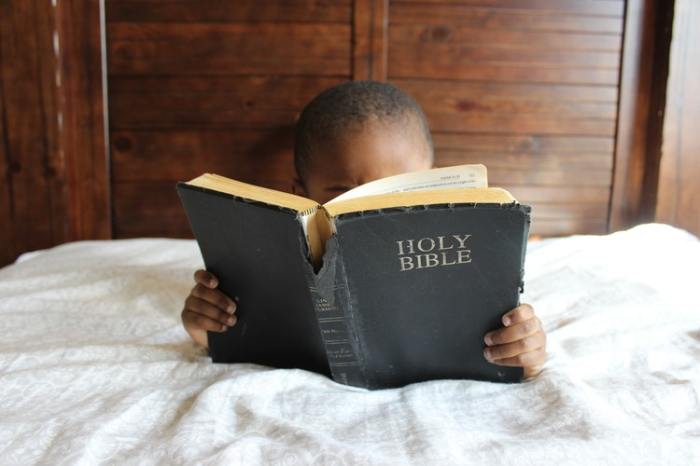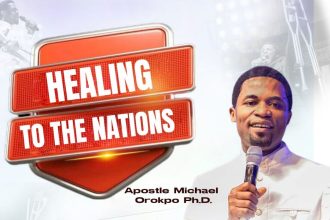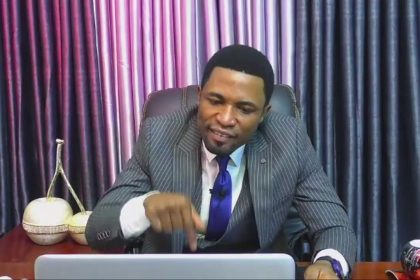
Jesus had brothers and sisters who are mentioned in the New Testament. But what can we know about them?
Jesus’ human family
In the New Testament we read many times about Jesus’ brothers and sisters. Some are named and appear in the Early Church. There is no family tree or a passage explaining it, but if we piece together relevant passages and verses in the Gospels and the Epistles, we can build up a picture of the human family which Jesus was born into.
Brothers and sisters in the Gospel accounts
In one story, it says of Jesus that “while he was still speaking to the people, behold, his mother and his brothers stood outside, asking to speak to him.” This is found in Matthew 12:46-50 and a very similar account in Mark 3:31. Luke adds that “his mother and brothers came to him, but they could not reach him because of the crowd” (Luke 8:19).
Then in Matthew 13:55-56, people ask ‘Is not this the carpenter’s son? Is not his mother called Mary? And are not his brothers James and Joseph and Simon and Judas? And are not all his sisters with us?’ A similar passage is given in Mark 6:3 when it says, ‘Is not this the carpenter, the son of Mary and brother of James and Joses and Judas and Simon? And are not his sisters here with us?’ In the Mark version the difference is that Joseph is called Joses, which is a short form of Joseph, and the order of Simon and Judas is switched.
In John we have Jesus staying in Capernaum with his family: ‘After this he went down to Capernaum, with his mother and his brothers and his disciples, and they stayed there for a few days’ (John 2:12).
Joseph
Joseph appears in the story of Jesus’ childhood. Luke 2:41 says, “Now his parents went to Jerusalem every year at the feast of the Passover,” and took Jesus with them.
After that, Joseph seems to drop out of the story, and it’s assumed that he had died. Only Mary is at the crucifixion, but not Joseph, and Jesus asks John to look after Mary (John 19:26-27).
For some, this suggests that she had no more children to care for her. But it also makes sense if Joseph is not around, and if her other children were busy with their own families living in Galilee at the time. However, it seems that by the time of Pentecost, the Bible says his brothers were back in Jerusalem. It reads, “All these with one accord were devoting themselves to prayer, together with the women and Mary the mother of Jesus, and his brothers” (Acts 1:14).
The brothers
So, we have the names of Jesus’ four brothers who are James, Joseph (also called Joses), Judas and Simon. In the lists James is always first, followed by a brother, who is called Joseph in Matthew and Joses in Mark, which are two forms of the same name. People often list brothers and sisters in the order of age, so we can probably assume that James is the eldest brother.
Two of the letters in the New Testament are likely written by brothers of Jesus. The Epistle of James is usually believed to have been written by his brother James. James was a leader of the Church, and Paul called him one of its pillars along with John and Peter.
Paul calls James “the Lord’s brother” in Galatians 1:19. His brother Jude (short for Judas) wrote the epistle of Jude. In Jude’s letter he describes himself as a “servant of Jesus and the brother of James” (Jude verse 1). If James is the brother of Jesus, then so is Jude. This shows that two of his brothers, at least, were active parts of the Early Church.
We also know that Jesus’ brothers were also married because Paul wrote in his letter to the Corinthians: “Do we not have the right to take along a believing wife, as do the other apostles and the brothers of the Lord and Cephas?” (1 Corinthians 9:5). If Jesus started his ministry aged about 30, he could well have been an uncle to nephews and nieces at the time.
The sisters
The New Testament also says that Jesus had “sisters.” This word is in the plural. We do not know how many sisters, but because it’s in the plural, it’s at least two, and quite likely more. We don’t know their names, but we can imagine that it’s likely one was called Mary, because it was common to name a daughter after the mother, and there is a son called Joseph. Mary was also a common name at the time.
Nature of these brothers and sisters
The question arises, and has arisen through the centuries, as to whether these brothers and sisters are the later children of Mary, or if they were the children of Joseph by a previous marriage to an unnamed wife. If they were the children of Mary, then they are half-siblings to Jesus and younger than Him, and perhaps the oldest were born in Egypt. If they are the children of Joseph by a previous wife, then they are step-siblings to Jesus and older than Him. The text just says brothers and sisters and does not say “half-brothers” nor “step-brothers.”
In the Old Testament, the 10 half-brothers of Joseph are all called brothers, so the Bible does not make these distinctions. In English, it’s quite common in families that people talk about their siblings as brothers and sisters, regardless of whether they’re half-siblings, step-siblings, adopted siblings or foster siblings.
The theological debate comes down to the nature of Mary. Some people don’t like to imagine Mary as having had more children, and prefer to imagine the Virgin Mary as having remained in such a state all her life. This has become dogma for people in the Catholic and Orthodox traditions.
So were these brothers and sisters children of Mary, or children of Joseph to a previous marriage? The New Testament doesn’t say explicitly, but there are clues in the text which help us to look at this.
The Christmas story
One clue is in the Christmas story at the start of Matthew and Luke, where Mary and Joseph travel to Bethlehem. There is no mention of other children traveling with them. This is not conclusive since they might have been there and not mentioned, and that could explain how it was hard to find somewhere to stay.
Firstborn Son
Another clue is in Luke 2:22–23, where Jesus is called Mary’s “firstborn son.” For some people that contrasts with Jesus being called God’s “only begotten son” (e.g. in John 3:16), implying he was the only one, whereas firstborn implies more came later.
This is not proof that Mary had more children, because the reference to firstborn might be related to the ceremonies required for a firstborn son. The firstborn sons were consecrated to God (Exodus 13:1–2) in a ceremony which Joseph and Mary took part in at the Temple (Luke 2:22–23). This ceremony was for every Jewish woman that had just had her first male child, who at that time would not know whether they should go on to have more children or not. So it does not necessarily imply Mary had more sons, but Luke could have called Jesus Mary’s only begotten son and did not. The presence of Joseph at the ceremony might or might not imply it was also his firstborn son.
Mary with children
Another clue is in the fact that we find that during Jesus’ ministry, Mary came to find Him with His brothers and sisters with her. Luke records that Jesus was “about thirty years of age” (Luke 3:23) when he began his ministry, so if Mary came with his brothers and sisters that could reasonably imply that she had young children with her.
Again, it’s not conclusive, but if they were older than Him, then they would be over 30 years old, and most likely they would have been busy with work, or their own family matters, and not with their mother. The story reads more like a mother with children in tow.
The Davidic dynasty
Another interesting clue is in the genealogy of Jesus. In his Gospel, Matthew records the ancestry of Joseph down the royal line. The ancestry of Joseph is traced from Abraham to King David and his son, King Solomon (Matthew 1:6) and then down through the line of the kings of Judah down to Jechoniah, who was king before the Babylonian exile.
Before Jesus was born, Joseph went from Galilee, out of Nazareth, to “the city of David, which is called Bethlehem,” and the reason given was that “he was of the house and lineage of David” (Luke 2:4). Then in Matthew’s account of the Nativity, the Magi came and asked of the whereabouts of the new baby destined to be “King of the Jews” (Matthew 2:2), which can also be translated as “King of the Judeans.”
Later in his ministry, Jesus is referred to as “son of David” (Luke 18:38-39). In the Bible the words translated “son of” can also sometimes mean “descendant of” and “Son of David” functions rather like the surname Davidson, in that someone with that surname had an ancestor called David, but their father is not necessarily called David. It is acknowledging him as being from the royal line of David.
There are today many countries and regions, which are now constitutionally republics, but were formerly monarchies. Often the royal family still exists, still has loyal supporters, and the lineal successor or heir to the erstwhile throne is called king. There are many examples in Europe.
So, when Pontius Pilate asked Jesus: “Are you the king of the Jews?” (Luke 2:3), this makes more sense if he realized that He could hold that title without the political function. Jesus could not have been titular king of the Jews unless Joseph had died, and He was recognized as head of the royal house of David.
When Jesus was on the cross, a notice was attached which said, “Jesus – King of the Jews” (Matthew 27:37 and John 19:19). Jesus would not have been king of the Jews if He had not been Joseph’s oldest surviving son. We know that Jesus had brothers who were alive at the time, which perhaps implies that the eldest of the brothers, Joseph, must have been younger than Him.
Difference of opinion
None of these verses in themselves prove that the brothers and sisters of Jesus were the later children of Joseph and Mary. However, taken together, the most straightforward understanding does seem to strongly suggest it. Nevertheless, the ancient tradition that Mary was ever-virgin and had no more children is deeply held by many Christians from traditional denominations, although rejected by most Evangelicals.
The subject of the nature of the brothers and sisters of Jesus is a point of interest and discussion, but not worthy of division. As Paul says, in areas of dispute let each be persuaded in their own mind (Romans 12:5) and not judge each other over this issue (Romans 12:13). The point is that Jesus was born into a human family, and members of that family, namely his mother and at least two brothers, were involved in the Early Church from Pentecost.
Originally published at Christian Today







